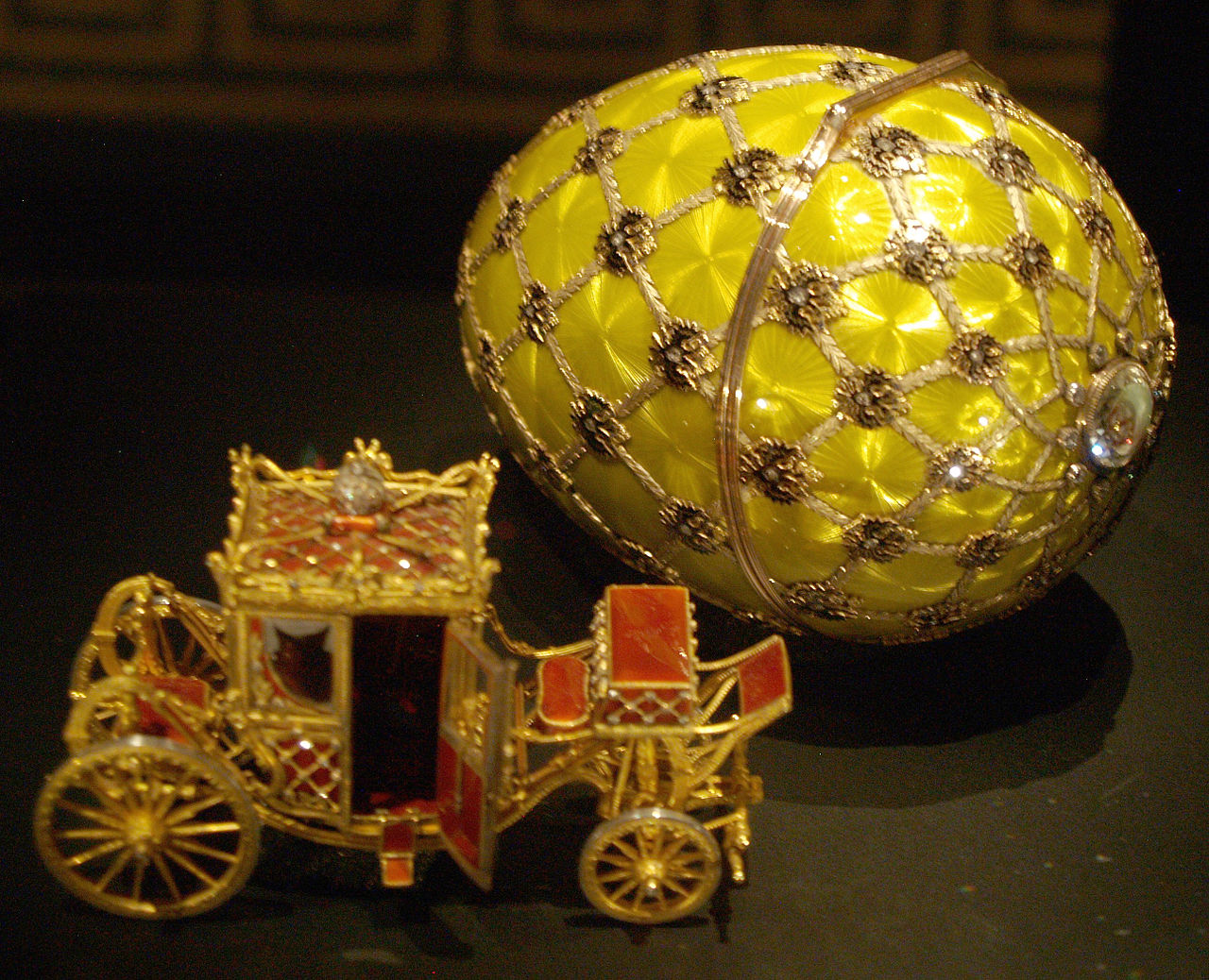Walk: No, couldn't figure out what to do today
Distance: n/a, yoga
 |
| Peter Carl Faberge (supervisor), Imperial Coronation Egg, 1897, to commemoriate Tsarina, Empress Alex Fyodorovna |
Easter season puts Ciwt in mind of the splendid "Imperial" eggs created by the jewelry firm House of Faberge in Saint Petersburg, Russia between 1885 and 1917 Fifty-two of these most special Imperial ones were made (forty-six survive) under the supervision of Peter Carl Faberge specifically for the Russian Tsars Alexander III and Nicholas II. They were Easter gifts for their wives and mothers, and it is said not even the Tsars knew what form these elaborate bejeweled eggs would take - only that they would be unique and contain a surprise like the exquisite gold and enamel chariot above.
On their Easter egg hunt tomorrow some child or lucky lady may find an egg with the Faberge name on it. It might even be heirloom quality. But it won't be one of the orignial - and only - 69 eggs fabricated in Russia. Fifty-seven known ones survive and are held in museums and the collections of immensely wealthy individuals or foundations. After they were created came the Russian Revolution, the nationalization of the Faberge workshop and the departure of the Faberge family from Russia in 1918.
What these hunters may find lying in the grass is an egg by the several companies who have since acquired the Faberge trademark. And they be very fortunate campers because the quality of these eggs can be quite high, especially those made by the Victor Mayer Jewelry Company from 1998 - 2009. Plus they are very pretty, and won't break as easily as real eggs. Happy Hunting.
No comments:
Post a Comment